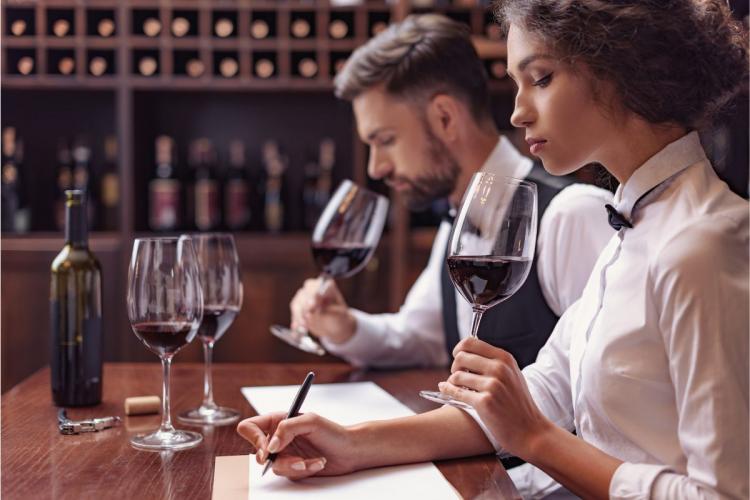Proper wine tasting techniques
If you asked ten people about their techniques of tasting wine, you would probably get as many different answers.
Why? Many people who taste wine don't really think about the uniformity and consistency that go into tasting wines.
Why is this "technique repetition" so vital for tasting wines? Each wine must be judged equally. If there are different techniques, each wine will not get equal footing on which to judge.
Embarking in a wine tasting experience is enriching, educational and enjoyable.
While there are no set rules of order for tasting wine, there are a few techniques to consider that will make the tasting more enjoyable. The most important thing to remember is be consistent. If you are consistent, then all of the wines will have their unique tastes come through equitably, and you will be able to better describe the wine and the experience.
Drink to me only with thine eyes
Drinking wine starts with the eyes. The first thing to do in a wine tasting is to assess the way the wine looks. Does the wine look good for its age? When a wine reaches its full potential, the first thing you'll notice is its color. As wine ages, the color becomes more intense. For instance, a young Pinot Grigio will have a lighter yellow, almost clear color. As it ages in the bottle, the color will develop into more of a warmer, golden color.
When looking at the wine, you want to make sure the color looks right for the age. This technique takes a bit of practice. The more you taste wine, the better you will become at knowing what color a wine should be at each stage of the aging process. So, begin by drinking only with thine eyes.
Swirl and sniff
Swirling and sniffing the wine is a very important technique in tasting a wine. Not surprising since most of us know that when eating food, about 50% of the taste comes from the smell that travels through your nose, some times is even 80% of the taste. Consider how food loses some of its appeal when you have a stuffy nose. The same holds true for wine. Half of the flavor of the wine comes from the aroma.
Swirling the wine allows the aromatics to come out of the wine and oxygen to further develop the wine, similar to the act of decanting. Once you have swirled the wine, take a slow, soft sniff with your nose. Many people barely sniff because the sugar and alcohol catch them off guard, stinging the nostrils.
The trick to a proper sniff is to put your nose completely into the glass, then start breathing in slowly, so the sugar and alcohol smells do not catch you unaware. Once you are past the sugar and alcohol, finish with a deep breath. Try to identify aromas that are filling your nostrils, better if you can describe those aromas.
Sip or spit
If you taste many different wines, spitting may be your preference simply because, in the end, you want to be able to enjoy the wines you purchase later! Sipping that many wines may be a bit more alcohol than most people can tolerate. However, spitting may not be an option at some wine tasting events. It all depends on the set up. If that's the case, ask for very small portions of each wine sample, or pass on several varieties and sip fewer samples.
Whether sipping or spitting, try to identify the flavors you taste while the wine is in your mouth and on your tongue. This is referred to as the mid-palate. This tasting technique is based upon the different taste regions of your tongue.
The finish
When you finish tasting the wine by either swallowing or spitting, also known as the finish, you get yet another part of the taste. Again, try to analyze what tastes are coming through.
Reflect, record, repeat
Give some thought to your experience sipping the various samples of wine. Did one particular wine make you think about sitting by the pool, nibbling on fruit while another wine put you in the mood for a big, Italian meal?
Jot these ideas down in a wine tasting journal to help you recall the different wines you've tried. Many seasoned wine tasters include a label in their journal so they can quickly recall which wine to enjoy with which meal or occasion.
Practice makes perfect. This does not mean you must go out and buy thirty bottles of wine and try them all in one night. Gradually taste different varieties of wines at different wine tasting events and you'll get a well-rounded education.
Before you know it, you'll be identifying wines that suit every occasion, and enjoying them more than ever!
A comprehensive guide to wine ratings and reviews
Comprehensive guide to the color of wine
Have you considered how the shape of a wine glass affects the taste? It does. It is another thing good to know before a wine tasting experience.
Check also the wine cellar.
Discover international food and wine a recipe at a time. Explore other countries and travel around the world from the comfort of your own home.

